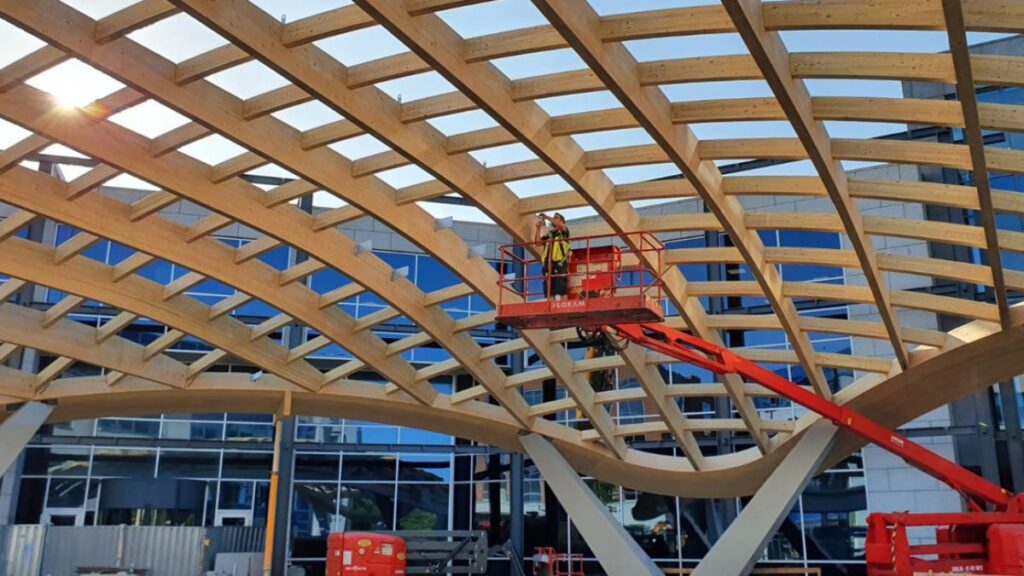Curved beams have become synonymous with modern architectural elegance, blending functionality with striking visuals. From creating fluid, open spaces to supporting innovative designs, these structural elements redefine the limits of engineering and aesthetics. But how are these intricate curves achieved?
With expert fabrication, architects and engineers can bring their most ambitious designs to life. This blog will explore the significance of curved beams in architecture, the techniques used to create them, and key considerations for achieving precision.
The Role of Curved Beams in Architecture
Curved beams do much more than add aesthetic appeal. They also offer practical benefits that make them integral to contemporary architecture:
- Enhanced Structural Integrity
Curved beams distribute loads efficiently and improve structural strength. They are ideal for handling large spans while maintaining stability.
- Design Flexibility
From sweeping facades to spiraling staircases, curved beams allow architects to explore new creative possibilities.
- Seamless Integration
Blending form with function, curved beams often complement natural landscapes or existing structures, creating harmony between architecture and surroundings.
Techniques for Achieving Precision Curves
Creating durable and visually flawless curves requires advanced steel bending techniques. Below, we break down the most effective methods used in producing curved beams for architectural projects:
1. Rotary Draw Bending
Rotary draw bending is a go-to technique for high-precision projects. It uses a fixed die to form steel tubes into exact curvatures without compromising their structural integrity. This method is ideal for constructing architectural frameworks like domes, arches, or canopies.
2. Mandrel Bending
When working with thin-walled tubes that require tighter radii, mandrel bending is indispensable. A mandrel inserted inside the tube prevents wrinkling and deformation during the bending process. This technique proves essential for intricate architectural details.
3. Roll Bending
Roll bending uses three rollers to form larger, sweeping curves. This process is commonly used for long beams in grand-scale architectural projects such as stadium roofing or bridge formations.
To achieve precision in these techniques, working with an experienced provider of steel tube bending services is essential for preserving the integrity and strength of the material.
Applications of Curved Beams in Architecture
The versatility of curved beams has made them a staple in many architectural projects. Below are some of the most notable applications:
1. Iconic Roof Structures
From stadiums to auditoriums, curved beams are commonly used in creating expansive roofs with bold, swooping designs. Examples include the Sydney Opera House or various Olympic stadiums.
2. Bridges
The aesthetic and structural advantages of curved steel beams often take center stage in bridge design. They lend a sense of smooth transition while supporting heavy loads over long stretches.
3. Interior Elements
Curved beams don’t just appear in external structures. They’re also featured in interiors for creating distinctive ceilings, mezzanines, and spiraling staircases.
4. Commercial Spaces
Modern office buildings and shopping malls leverage curved beams to bring in natural light through open, sweeping designs without using bulky support structures.
Challenges in Bending Curved Beams
Despite the advancements in bending techniques, challenges still arise during the fabrication process:
- Spring-Back Effect
Steel beams often “spring back” slightly after being bent. Skilled workers must account for this during production to achieve the intended shape.
- Maintaining Strength
Improper bending could weaken the steel or cause microfractures. Precise machinery and experienced operators are crucial to avoid compromising structural integrity.
- Consistency in Bulk Projects
For large-scale projects requiring multiple identical curves, repeatability becomes a challenge. Specialized equipment ensures that every beam matches exact specifications.
Choosing the Right Steel Tube Bending Provider
When designs hinge on precision, selecting the right partner for steel tube bending services is critical. Here are key factors to consider:
- Experience and Expertise
Your provider should demonstrate expertise in bending techniques, especially for architecture-specific requirements.
- Versatile Techniques
Look for providers equipped to offer multiple bending methods, ensuring they can adapt to your project needs.
- Proven Track Record
Evaluate previous architectural projects they’ve delivered to gauge the quality of their work.
- Precision Machinery
Modern CNC-driven machines ensure accuracy and repeatability, which are vital for large-scale architectural projects.
For a trusted expert in curved steel solutions, explore available steel tube bending services to bring your architectural vision to life.
Final Thoughts on Curved Beams in Architecture
Curved beams represent the convergence of art and engineering. They’re not merely structural components but essential contributors to the aesthetic, functional, and sustainable goals of modern architecture.
By utilizing advanced steel bending techniques, architects can push the boundaries of design while maintaining the structural integrity necessary for ambitious projects. From delicate interior accents to towering facades, curved beams allow us to rethink the way we build and interact with spaces.
Through collaboration with experienced bending service providers, the execution of even the most complex designs is possible. Unlock the potential of steel fabrication and transform architectural challenges into iconic masterpieces.






